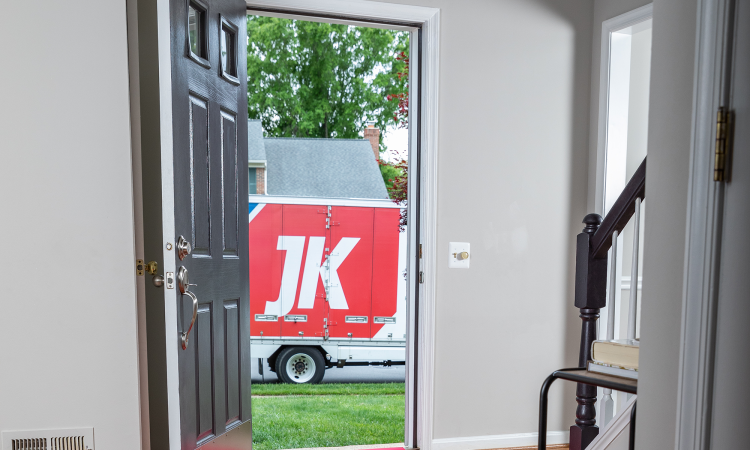Know what you’ll be paying—before you move
Are you planning a move and looking for accurate moving quotes and estimates? At JK Moving Services, we understand that knowing your moving costs upfront is essential for a smooth relocation experience. This guide will walk you through the process of obtaining precise moving estimates, ensuring you have all the information you need for your upcoming move.
Before you begin comparing prices, it’s helpful to understand what makes a mover trustworthy and professional. These practical tips for choosing a reliable moving company can give you a strong foundation as you evaluate your options and request estimates.
Why Accurate Moving Quotes Matter
Obtaining accurate moving quotes is crucial for several reasons:
- Budgeting: Knowing your moving costs helps you plan your finances effectively and avoid unexpected expenses.
- Avoiding Surprises: An accurate estimate prevents last-minute surprises on moving day, allowing you to stick to your budget.
- Peace of Mind: A clear understanding of your moving costs allows you to focus on other aspects of your move without added stress.
Three options for estimating your move:
- JK virtual self-survey: Customers can use Yembo, an Artificial Intelligence (AI)-supported technology that allows homeowners to conduct a survey of their homes themselves – when it’s convenient to them.
- JK virtual consultation: Homeowners can work with a Move Consultant directly to conduct a live visual survey of their home and receive an online move estimate.
- JK in-home consultation: Customers can request an in-home consultation with a Move Consultant.
The estimate on your moving quote is largely determined by just a few things, for example the number of items you’re moving, their weight, and, in a long-distance move, the distance you’ll be moving.
We recommend reading up on your responsibilities as a moving customer:
How are prices estimated?
A move quote is based on a complete review of your home and belongings, including things like:
- Oversized furnishings
- Narrow hallways
- What you will pack vs. what we will pack
- The distance of the move
These details help us determine the requirements of your move: the hours needed, the number and type of trucks, the size of the crew. For long-distance and international move, we’ll factor in the estimated weight of your shipment, too.
Local, long-distance, interstate, intrastate—what does it all mean?
This depends on the where you’re going and the residential company you’re moving with.
At JK, we consider a local move to be any move within our commercial zone, from Fredericksburg, VA to Boonsboro, MD and from Winchester, VA to Annapolis, MD. Any move outside of this zone is long distance. So it is possible to make a “local” move across two states in the Washington, DC metropolitan area (for example, from Bethesda, MD to Arlington, VA).
- Interstate move: means across two or more states.
- Intrastate move: Generally refers to a move within the same state. In Virginia, JK considers any move of less than 30 miles inside of the state as local, rather than intrastate, as long as it falls within our commercial zone.
Your move consultant or move coordinator can provide guidance on any state and federal regulations your move will need to follow.
Understanding moving estimates: Binding vs. non-binding
- Binding Estimates: A binding estimate obligates you to pay the quoted price, even if the final shipping weight or number of items is less than estimated.
- Non-Binding Estimates: This type of estimate bills you for the final weight of your shipped goods; it serves as a preliminary approximation of costs.
- Not-to-Exceed Estimates: Also known as a guaranteed price or price protection, this estimate allows you to pay either the quoted price or the actual cost, whichever is lower.
Moving a house in a hurry isn’t ideal, but with the right approach, it doesn’t have to be overwhelming. At JK Moving, we specialize in making even the most rushed moves go smoothly. Contact us today to see how we can assist you with your move—no matter how tight the deadline.


